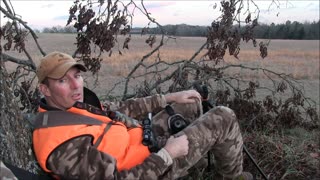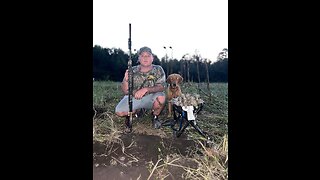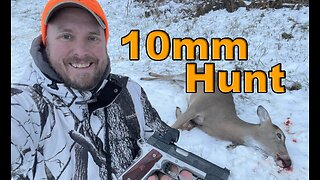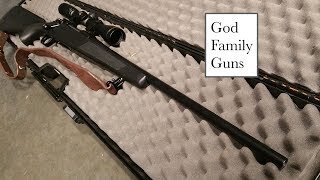Dove hunting - How to Aim
Learning to hunt doves and aiming accurately requires a combination of knowledge, skill, and practice. Here are a few steps to get started:
Study dove behavior and habitat: Understanding the behavior and preferred habitats of doves is crucial. Learn about their feeding patterns, flight patterns, and nesting areas. This knowledge will help you identify the best locations and times for hunting.
Choose the right equipment: Invest in a reliable shotgun that suits your size and shooting style. Select the appropriate ammunition, typically smaller gauge shotshells like 20 or 12 gauge. Familiarize yourself with your equipment and ensure it is properly maintained.
Practice proper shotgun handling: Safety is paramount in hunting. Learn how to handle your shotgun safely and follow all local hunting regulations. Practice shouldering, aiming, and reloading your shotgun until you feel comfortable and confident with its operation.
Develop your shooting skills: Aiming at flying doves can be challenging, as they are fast and agile. Engage in clay pigeon shooting or target practice to improve your accuracy and tracking skills. Focus on leading the target and predicting the bird's flight path to develop your timing.
Adjust for wind drift: Wind affects the trajectory of your shot, so it's crucial to compensate for wind drift. Determine the direction and intensity of the wind and adjust your aim accordingly. Aim slightly upwind or downwind, depending on the wind's direction, to counteract its effect on your shot.
Watch for gusts and lulls: Wind intensity can vary, with gusts and lulls occurring. Pay attention to these fluctuations as they can impact the bird's flight path. Time your shots for lulls, when the wind temporarily subsides, to improve your accuracy.
Be patient and observe: Windy conditions can alter the flight patterns of birds. Take the time to observe how the wind is affecting their movements. They may adjust their flight path, speed, or altitude to compensate for the wind. Understanding these adjustments will help you anticipate their behavior and adjust your aim accordingly.
Consider using heavier shot loads: In windy conditions, using slightly heavier shot loads can help counteract the wind's effects. Heavier shot loads retain their momentum better and are less likely to be significantly influenced by the wind. However, make sure to adhere to legal requirements and regulations regarding shot sizes.
Practice in similar conditions: The best way to improve your shooting skills in windy conditions is through practice. Seek out opportunities to practice shooting in windy environments, such as open fields or shooting ranges with wind simulators. This will help you become familiar with wind drift and adjust your aim accordingly.
Stay safe: Windy conditions can increase the difficulty of shooting accurately. Always prioritize safety and ensure you have a clear line of sight before taking any shots. Be mindful of your surroundings and be aware of potential hazards caused by the wind.
Remember to always adhere to hunting regulations and respect wildlife. Hunting in windy conditions requires extra skill and practice, so embrace the challenge and strive to improve your aim with experience.
-
 27:47
27:47
QspecialForces
1 year agoWE SEE YOU!!!🐸 #DDK - HUNTERS ARE HUNTING
3.27K16 -
 26:04
26:04
ryuuxvz
2 years agoSolo Dove Hunting
42 -
 11:34
11:34
KRal_1
9 months agoHANDGUN HUNTING - Doe At 268 Yards With A Handgun
4 -
 12:23
12:23
LoneStarBoars
6 years agoHOW TO DOVE HUNT
18 -
 9:20
9:20
nate614592
9 months ago2023 Opening Day Dove Hunt
13 -
 0:20
0:20
primalguy1
8 months agoDuck hunt
2 -
 0:14
0:14
hendsomexxx
2 years agoDuck hunt
30 -
 0:54
0:54
BABY BACON GAMES
7 months agoDuck Hunt
128 -
 8:03
8:03
Full Quiver Outdoors
1 year ago10mm Handgun Deer Hunt
28 -
 4:13
4:13
GodFamilynGuns
1 year agoMy Deer Hunting Rifle For 2018
90